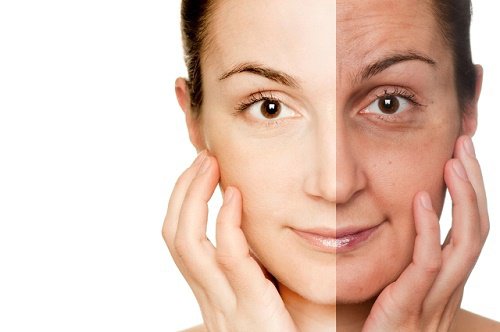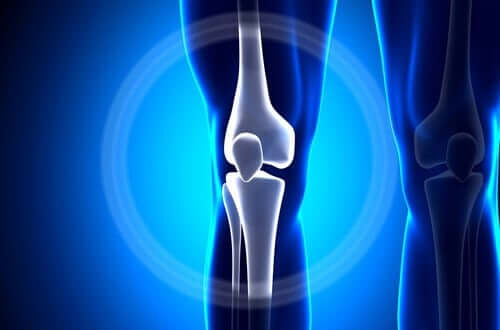5 Things that Cause Premature Aging


Written and verified by psychologist Valeria Sabater
Aging is a natural process that affects everyone. Therefore, it must be faced with integrity, optimism and plenitude. However, maintaining certain life habits can have a considerable influence on the impact of the passing of time.
For example, it helps to maintain a balanced diet based on natural food, as well as getting regular exercise or maintaining a constant routine. In addition, there are natural treatments that serve as supplements to help slow down aging.
It is important to always consult a specialist for any treatment you wish to start. The consequences of many therapies without adequate control can be very negative.
5 harmful things that cause premature aging
1. Harmful foods

Food has a decisive influence on the health and proper functioning of the body. So, it’s essential to follow a proper diet.
However, nowadays it’s often difficult to maintain these eating habits. There’s a high consumption of foods that, far from providing benefits, damage and accelerate the aging, as indicated in the scientific article ‘Aging and antioxidants‘, published in 2012.
For example, an excess of sweets can promote the destruction of collagen present in the skin. Also, alcoholic beverages by having a direct effect on the liver, prevent the proper elimination of toxins, and this promotes premature aging.
Likewise, there are other foods such as processed meat, which, because of the sulfite content, can also accelerate aging. This category can include, for example, sausages or the meat of certain hamburgers.
It’s also highly recommended to reduce the consumption of salty snacks, for example, French fries or nuts. Salt is a supplement that should be consumed in moderation; it can be dangerous for the body in excess.
Click to read more:
A Natural Remedy That May Slow Down the Aging Process
2. Unmanaged worry and stress

Cortisol tends to accelerate the heart rate. As well as causing injuries as serious as arteriosclerosis and also affects brain health.
In addition, stress also releases epinephrine, better known as adrenaline. This neurotransmitter can develop premature cell oxidation, preventing nutrients from being synthesized and lipids from building up in the blood.

3. Low intake of antioxidants
A low intake of antioxidants in your diet makes you more vulnerable to the impact of free radicals and its effects on your skin. This can seriously affect your skin, as shown in the study, Antioxidants: A current perspective for human health, published by a Chilean nutrition magazine.
Therefore, take note of these foods that you should include in your diet:
- A glass of lemon juice on an empty stomach, kiwis, strawberries
- Mangoes, melons, oranges
- Brussel sprouts, carrots
- Spinach, kale, tomatoes, papaya
- Pumpkin
- A cup of green tea or white tea every day
- 2 servings of oily fish each week
More information in:
6 Quick and Easy Salads
4. Careful with the sun
The sun helps to synthesize nutrients, such as vitamin D. It even has an influence on improving mood.
However, it’s important to know how to take it in moderation. For example, avoiding the hottest times of the day, and, above all, always using good sun protection.
It’s important to take care of your skin, protect it, and keep it in good condition. Not only to help keep it smooth and firm, but also to avoid diseases such as skin cancer.
Skin aging is closely related to sun exposure and the products we use to protect our skin, as we can see in the article ‘Solar cosmetics: premature ageing and sun protection‘, published by the magazine Ciencia y Salud Virtual.
5. The importance of calcium
Calcium is a mineral that you’ll need especially when you’re a child and when you’re getting older. Usually, after the age of 50, there can be a loss of bone mass, which leads to osteoporosis.
It’s very important to have regular check-ups at the doctor’s office to avoid this disease in time, as highlighted in the scientific article ‘Osteoporosis and diet‘. In addition, to help maintain adequate calcium levels, it’s advisable to regularly consume some of the following foods:
- A natural yogurt without sugar
- Cow or sheep’s milk
- A portion of tofu in your salads
- Three walnuts and three almonds each day

All cited sources were thoroughly reviewed by our team to ensure their quality, reliability, currency, and validity. The bibliography of this article was considered reliable and of academic or scientific accuracy.
- Rosenberg, D. R., Wright, B., & Gershon, S. (1992). Depression in the elderly. Dementia and Geriatric Cognitive Disorders. https://doi.org/10.1159/000107012
- Donini, L. M., Poggiogalle, E., Pinto, A., Giusti, A. M., & del Balzo, V. (2014). Malnutrition in the Elderly. In Diet and Nutrition in Dementia and Cognitive Decline. https://doi.org/10.1016/B978-0-12-407824-6.00020-3
- Yesavage, J. A., Brink, T. L., Rose, T. L., Lum, O., Huang, V., Adey, M., & Leirer, V. O. (1982). Development and validation of a geriatric depression screening scale: A preliminary report. Journal of Psychiatric Research. https://doi.org/10.1016/0022-3956(82)90033-4
- Grice, E. A., & Segre, J. A. (2011). The skin microbiome. Nature Reviews Microbiology. https://doi.org/10.1038/nrmicro2537
- León, E. E. S. (2012). Envejecimiento y antioxidantes. Boletin UISESS, 13(2), 14-16.
- Roca, A. J. (2010). ESTRÉS Y ENFERMEDAD. Enfoque psiconeuroinmunoendocrino. Medicina, 32(3), 223-236.
- Coronado, M., Vega y León, S., Gutiérrez, R., Vázquez, M., & Radilla, C. (2015). Antioxidantes: perspectiva actual para la salud humana. Revista chilena de nutrición, 42(2), 206-212.
- Vega, O. C. (2011). Cosmética solar: el envejecimiento prematuro y la protección solar. Ciencia y Salud Virtual, 3(1), 123-134.
- Chambi Gutiérrez, R. M. (2014). Osteoporosis y alimentación. Revista de Actualización Clínica Investiga, 42, 2204.
This text is provided for informational purposes only and does not replace consultation with a professional. If in doubt, consult your specialist.








